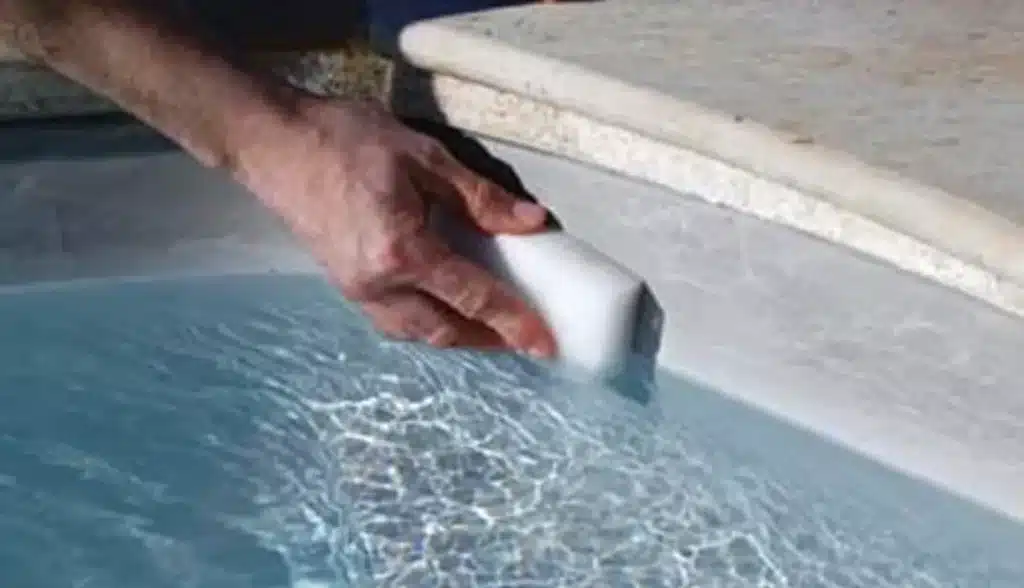Limescale is naturally present in water. When the concentration is too high, we speak of hard water. This problem, which makes water uncomfortable for bathers' skin, can also accelerate the deterioration of your technical equipment and the structure of your pool or spa. In this article, you'll find tips on how to treat hard water, prevent the appearance of scale deposits and deal with them effectively.

Calcareous water is characterized by excessively high levels of calcium and magnesium carbonates, which promotes the formation of limescale. This is known as hard water, with a TH above 20°f. TH should be between 10°f and 20°f (100 to 200 mg/l or ppm). Below 10°f, the water is too soft (which isn't good either).
Water hardness depends on where you live, as the water is more or less rich in soil minerals. It's important to know the water quality in your area, and to adapt your pool and spa water treatment to its characteristics.
Limescale deposits are mainly caused by :
Depending on water quality, the fight against limescale is one of the main problems facing pool and spa owners. The consequences can quickly become disastrous for the entire structure, as limescale attacks everything from water quality and pipes to the very structure of the pool itself.
When your pool is scaled due to hard water, white spots appear, followed by the development of algae, which adversely affects water quality. Scale then builds up and can interfere with the proper filtration of your pool or spa, clogging the pump and pipes. In the medium term, the liner and walls of your pool will be damaged.
Let's face it, it's much easier to prevent limescale than to intervene when it's already visible. As soon as traces appear, it's time to roll up your sleeves and act fast, before the damage is irreversible.
The most effective product for getting rid of limescale deposits is hydrochloric acid. But beware, it is highly corrosive! So it's imperative to equip yourself with protective goggles, rubber gloves and, if necessary, a dust mask to avoid inhaling the fumes. To avoid splashing, always add hydrochloric acid to water and never vice versa. Once the hydrochloric acid has been mixed with the water (one part hydrochloric acid to 10 parts water), use brushes to scrub the marks to be removed and rinse after a minute. Activate your pump for 8 hours. Close access to your pool for at least 24 hours: swimming is strictly forbidden after using hydrochloric acid.
Finally, note that the pH of your pool water will drop sharply. You will probably need to increase the pH of your pool water in the coming days.
White vinegar, which is much safer than acid, is also effective in removing limescale. However, removing limescale is likely to be more time-consuming. White vinegar is particularly recommended if your pool lining is ceramic.
Reduce the water level in your pond for easier access to the area to be treated. Spray on the vinegar and leave for about 1 minute before scrubbing with a brush. And don't forget that bright sunlight will enhance the vinegar's performance. If the result is unsatisfactory after these efforts, you'll have to use to hydrochloric acid.
Last but not least, the use of locally-used natural pumice stone is particularly effective for plaster coatings. This is by far the most natural and environmentally-friendly method, but it can only suffice for very localized application and when limescale deposits are incipient.
When the TH of the water exceeds 20°f (100 to 200 mg/l or ppm), you need to intervene very quickly to protect the structure of your pool and your technical equipment. The maintenance of your pool and regular water analysis are crucial.